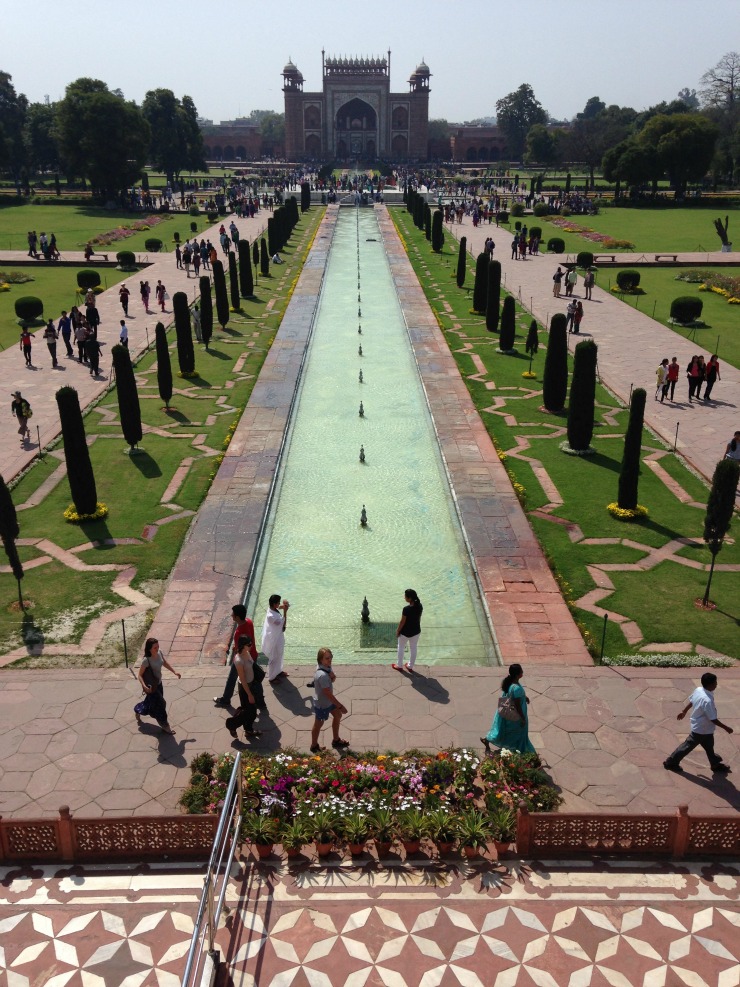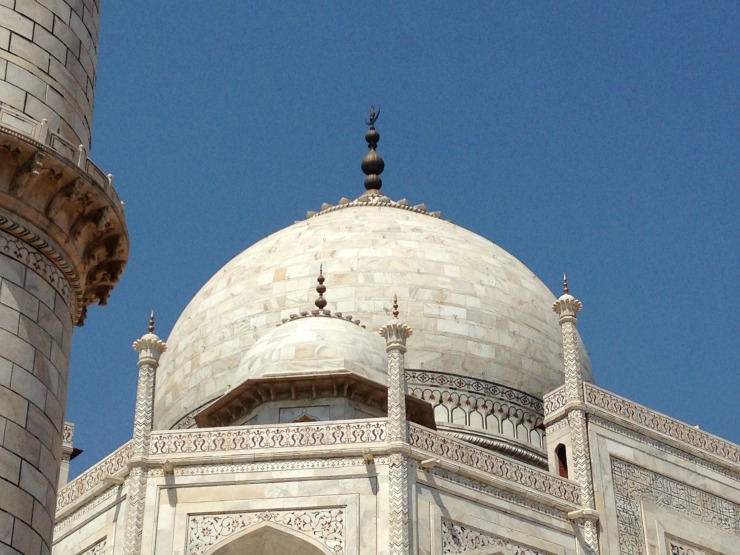Traveling to India on business? Here’s the ultimate insider’s guide for not getting sick, with tested and proven tips and expert travel advice, from a US businessman who’s been to India and back on international business travel numerous times and wants to share the secret of how to stay healthy.
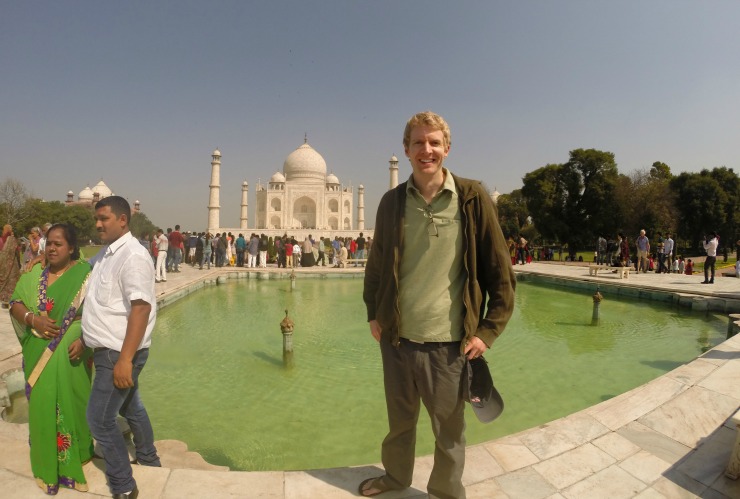
Disclaimer: I pulled this guide together and published it with the hope that the information I’ve personally gathered about traveling to India, along with tips and tricks collected from colleagues, will provide value to you. I feel privileged and honored to have the ability to call myself an international business travel expert. Having the privilege to visit India multiple times has been one of the most humbling experiences of my life, and I’ve made the intentional effort to get out and see the cities I’ve visited, to make the most of my time in India. Doing so has afforded me the chance to obtain a lens and world view not everyone is fortunate enough to be given, and along with my Christian faith, has played a part in putting many things in my life into perspective. Nevertheless, a warning, some of the information shared in this guide may be considered insulting to my Indian hosts and the Indian friends I have here in the States, such as the avoidance of certain foods or the extreme sanitary cautions I take, however, by no means is my intent to offend. While I speak in jest or sarcasm on certain topics, this is simply my human nature and is a means by which I can humbly begin to describe the fascination I have with both other cultures and how business gets done outside the USA.
Oh, and should you get sick while in India, don’t sue me as I’m not a doctor (or lawyer).
Table of Contents
- Passport & Business Visa Information for India
- Arriving in India, Hotel & Local Transportation
- Hygiene & Staying Healthy in India
- A Day in the Life of Darin
- Departing India – Don’t Miss This!
- Cultural Tips for Americans Doing Business in India
- Colleague “Never Sicker” on Flight from Bangalore to Hong Kong
Passport & Business Visa Information for India
According to the US State Department, you’ll need a Visa to enter and exit India.
I recommend working with a firm such as CIBT to obtain a Visa. CIBT will have all the most recent details and forms needed, which change often.
In 2007, when I began traveling to India on business, I was in such a crunch for time to obtain a Visa that I ended up going to my local India Consulate (which was in New York City at the time) to obtain a same-day India business Visa. With some advanced planning and the help of a firm like CIBT, you can avoid the fees associated with expediting and rushing the Visa process along.
Before going through the motions of applying for a Visa, keep in mind your passport must be valid for 6 months after your India trip concludes (i.e. if your trip to India will be in September, and your passport expires in December of the same year, you must renew your passport before obtaining a Visa).
India Business Travel Tip: Should you obtain a multi-year Visa that far outlasts the validity of your current passport, don’t worry, you can have your India Visa transferred to a renewed passport. I initially obtained a 10 year India Visa, and have had it successfully transferred to a renewed passport.
Arriving in India, Hotel & Local Transportation
If you fly into India from the US, you’ll invariably arrive between 1 and 5 AM local time (+/-) – you’ll come to find out that nearly all international flights in and out of India come and go between the hours of 11 PM and 4 AM.
I recommend staying at a high-end business hotel close to your arrival airport, and arranging directly with the hotel to be picked up from the airport by a hotel driver (you know, the guys that hold the small signs with your name on them). Whereas 5+ years ago a phone call was best, communicating with the hotel via email is entirely reliable now.
As an example, I’ve stayed at the Hilton Mumbai International Airport multiple times, the first being in 2007 when it was a Le Méridien property. The hotel is close to the airport, so you don’t have far to go before you’re able to crash after your 25+ hour voyage!
Heads up, oftentimes in India, there will literally be hundreds of people huddled close to one another waiting outside the international terminals to pick people up, so you’ll want to make sure you’ve arranged transportation ahead of your arrival directly with the hotel. That large group, with all eyes on you, was slightly daunting the first time I arrived, but, knowing there’s a driver waiting for you eases any concern.
Now it’s just a matter of finding the driver in that sea of faces!
India Business Travel Tip: Once exiting the terminal, if you have trouble finding your driver, simply walk up to the sea of people and ask where the person from my hotel typically stands. While there are hundreds of people standing there, it seems everyone knows everyone, and the Indians I have come across in these situations are very kind and will point me in the direction of where the driver from my hotel typically stands, oftentimes walking me over there directly!
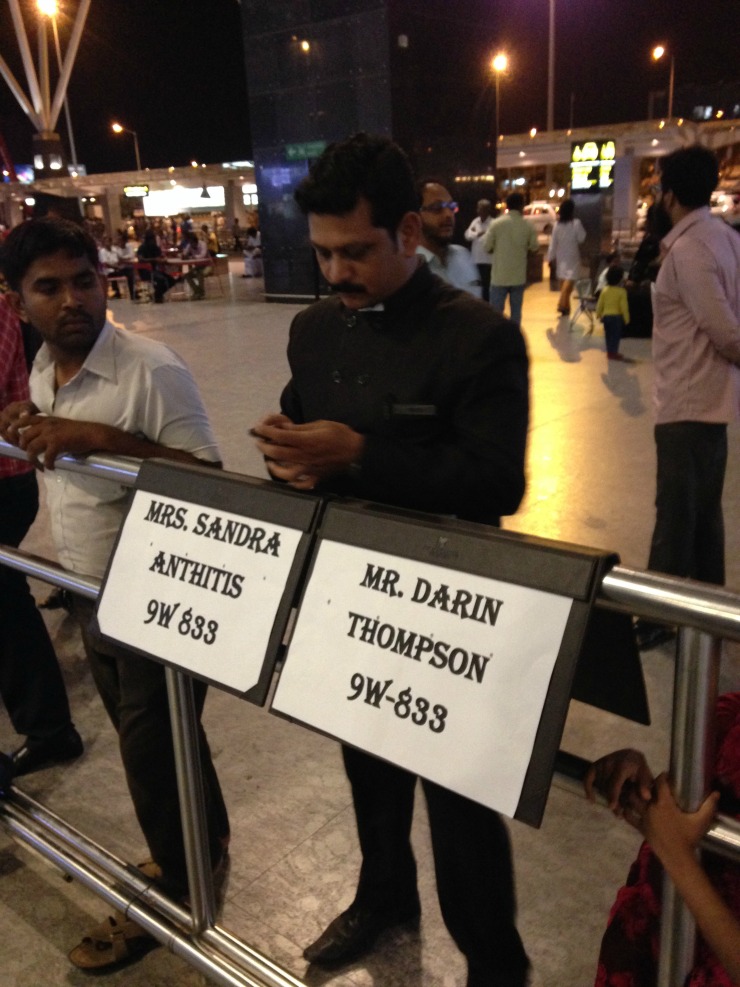
For navigation to and from business meetings in India, I recommend you hitch a ride with local business colleagues or hire a car directly from the hotel for the entire day. You don’t want to deal with issues that come with the local “taxis” – high-end business hotels have their own fleet of reliable cars and drivers that can be charged to your room, and it is best to stick with them.
Hygiene & Staying Healthy in India
Admittedly, the bulk of the tips and tricks I picked up when first traveling to India was in the food, water, and overall hygiene department.
My goal was to make it back to the US without getting physically ill.
I heard horror stories of “Delhi belly”, hospital stays, and even had colleagues at IBM that vowed never to return to India.
The stakes seemed high, even if it was all paranoia and hype. I’ve experienced food poisoning multiple times, while at home in the US, so I did feel it was necessary to be vigilant.
I’m happy to say that when I strictly follow the guidelines I’ll share with you, I don’t get sick.
Some may know that I did get sick, quite violently, one time.
It was hours before a departure from New Delhi back to the US in March 2014. A colleague can attest to it because he walked alongside me as I was pushed in a wheelchair by a kind airline attendant from airport check-in all the way through the airport to the British Airways first-class lounge.
I feel confident in sharing the guidelines below, knowing that if followed, they’ll keep you safe. I didn’t fully follow them in March 2014, and I paid the price, and my guidelines have now been refined to put up additional armor to prevent getting sick ever again while in India – I had the opportunity to test the revamped guidelines on a multi-city business trip to India in 2015, and even traveled with another Austin-based colleague who was making his first trip to India, we followed my regime precisely, and we both arrived home safe and sound.
The key starting point, which is obvious, but needs to be stated, is that you must be very cautious of anything that goes into your mouth. You can very easily get sick if you don’t take proper precautions.
Below are recommendations on personal hygiene and food that I received from a colleague before traveling to India for the first time back in 2007, they have served me well, and I have since made multiple updates to them so that I can continue to stay safe (and healthy) while traveling on business to India.
- In general, at least for the first few days, depend on the hotel food. Oftentimes, the hotel has some good restaurant options.
- Do not drink tap water in any form (unless you know it’s been boiled sufficiently). Some beverages that are probably safe to drink include hot tea, coffee, and other hot drinks made with boiled water, as well as bottled or canned beer and wine. Note that condensation on canned or bottled beverages may be contaminated, so clean them before drinking.
- I personally only drink bottled water or beer while in India. As well, I ensure that if I’m drinking bottled water, it’s brought to me unopened (I want to physically see it opened in front of me so that I can be confident there’s no tap water in it).
- Colleagues have shared with me that coffee, despite being prepared with “hot” or boiling water, may have caused stomach upset – in my opinion, best to avoid coffee and get your caffeine, if you need it, from a bottled source like a Coke or similar.
- Avoid ice cubes in drinks and foods.
- Pass up foods rinsed under tap water, such as raw fruits and vegetables (i.e. salads). However, if you can peel the fruit yourself, it’s probably safe to eat – I personally avoid even bananas.
- Avoid consuming meals that may not have been cooked or reheated enough to kill microorganisms, or are not served piping hot – avoid lasagna, quiche, casseroles, and cold soups.
- Don’t eat raw or inadequately cooked food, such as meat, seafood, and eggs. Note that some kinds of fish and shellfish still may not be safe to eat even when fully cooked because they can contain poisonous bio toxins.
- Avoid mayonnaise and other sandwich spreads – this is the one that got me in 2014, I ordered a sandwich, at a 5 star hotel, and asked for the spread to be taken off and I should have sent it back after it arrived with the spread on it.
- Stay away from unpasteurized milk and other dairy products.
- Steer clear of food and drinks from Indian street food vendors.
- Do not brush your teeth with tap water — use bottled or canned carbonated water instead.
- Wash your hands before meals using antiseptic or antibacterial gel, or prepackaged wipes.
- Keep your mouth closed while showering to prevent accidental ingestion of tap water.
A Day in the Life of Darin
After brushing my teeth with bottled water and taking a shower without opening my mouth to avoid ingesting tap water, I typically grab 2 protein bars from my stash and throw them into my briefcase for later in the day, when I invariably get hungry because I haven’t really eaten anything all day, along with a packet of raspberry Emergen-C and head to breakfast.
If my schedule allows, I get outside the hotel early in the morning before breakfast to see the streets of India wake up, watching local Indians start their day is fascinating. The dichotomy of life behind the walls (literally) of a 5-star business hotel and Indian life just steps away is fascinating, humbling, and worth emotionally pressing into.
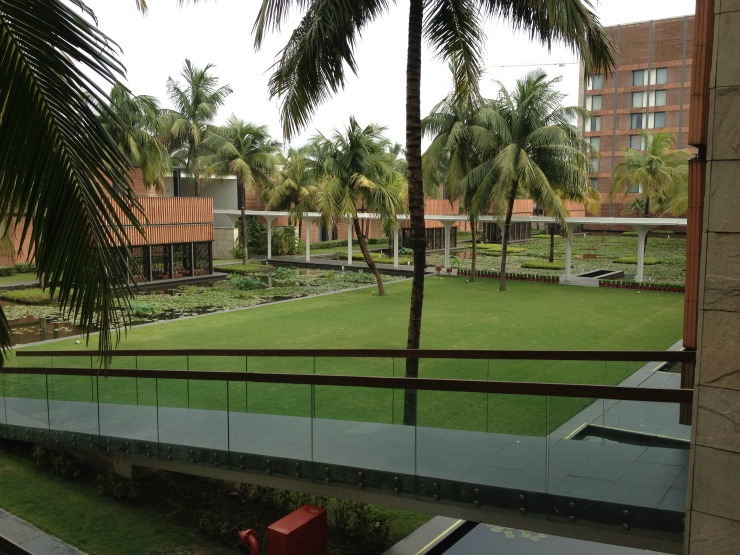
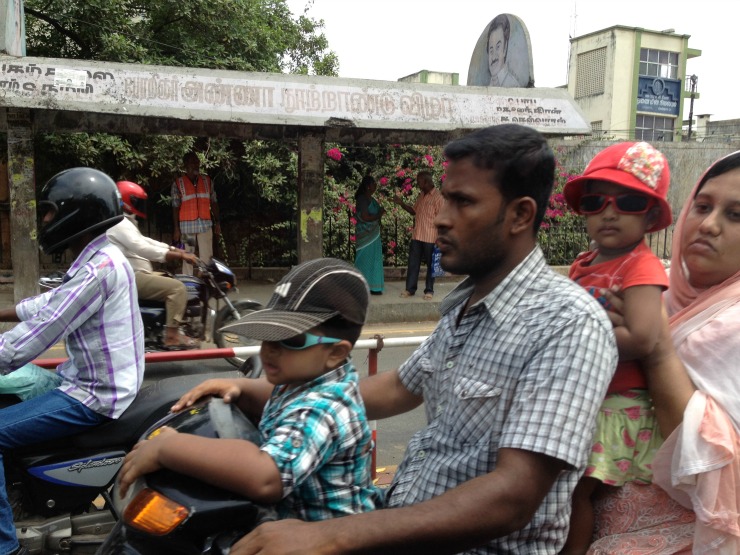
Breakfast, for me, most oftentimes consists of carbohydrates like slices of bread and muffins, and/or “well-cooked” eggs. I ask the server for an unopened bottle of water for my Emergen-C and take any daily vitamins and/or medication for malaria depending on the advice of my travel nurse that I consult before departure from the US.
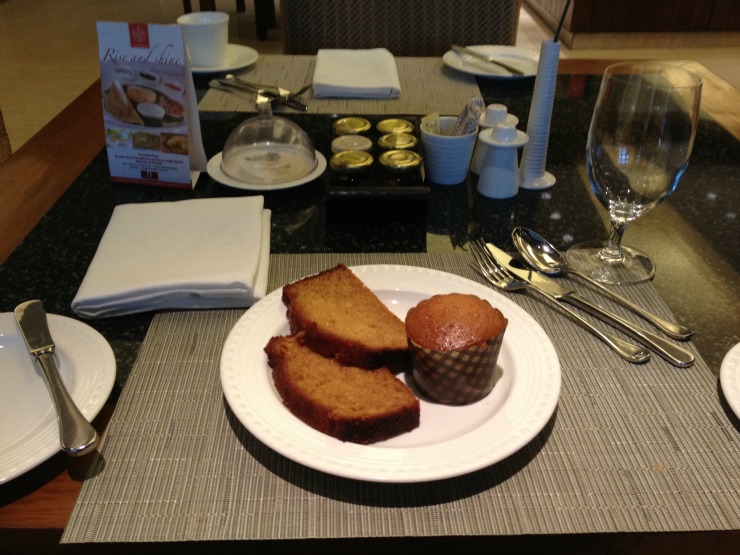
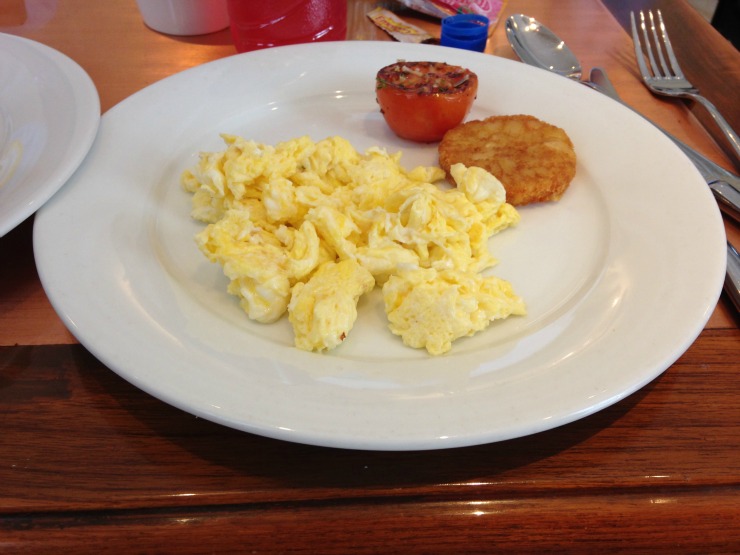
When it comes time for lunch, my goal is to find pizza. My thinking is that it’s safe 🙂
Pizza, unfortunately, is often not a possibility, as many times I’m speaking at or attending an event that is serving food in a buffet setting. When I get hit with such a situation, I’ll typically load a plate up with rice and naan (yeh, more carbohydrates), along with an ever so small amount of steaming hot meat like chicken and its corresponding curry sauce – enough to get some protein, but at least in my mind, not enough to get me sick.
Don’t forget to sanitize your hands and watch out for plates that have standing water on them. Grab a bottle of water, and don’t forget that you’ve got at least one protein bar left in your bag!
When dinner rolls around, I again seek out pizza, but oftentimes, it’s another buffet. l follow the same protocol used at lunch but supplemented by a Kingfisher beer or two for additional calories.
Colleagues typically poke fun at me that I count on getting a calorie boost from Kingfisher beer. Unfortunately, Kingfisher is one of my least favorite lager beers. Nonetheless, there are many different types of Kingfisher beer, worth trying each to see if you find a winner.
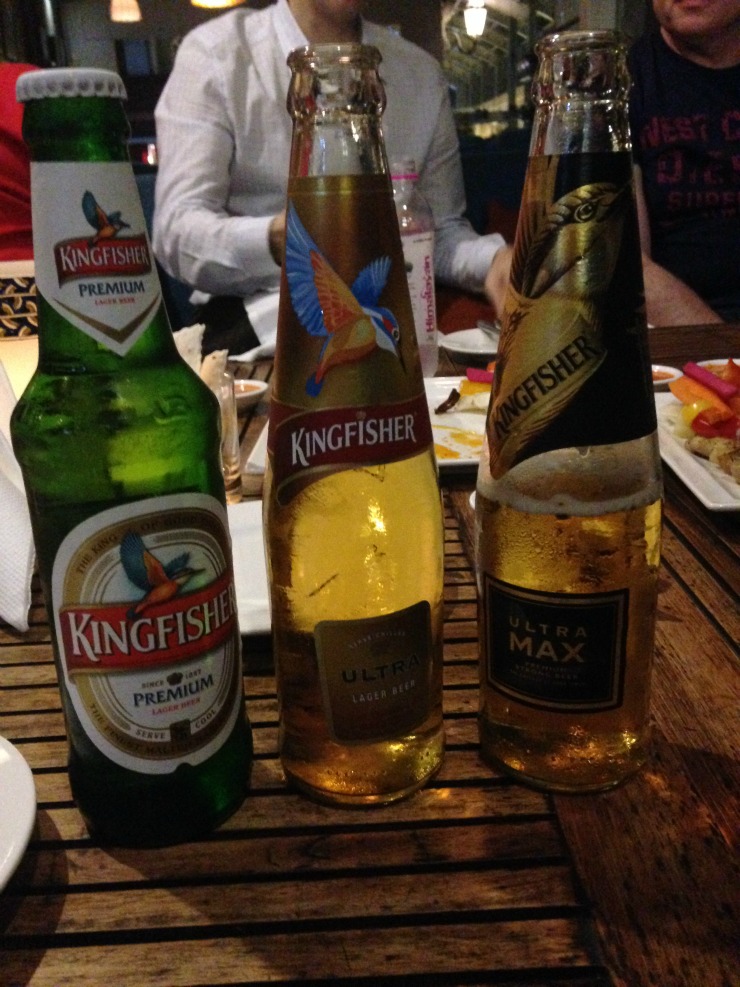
Once your business obligations are finished for the day, try and get out with one of your local hosts and/or colleagues and see the city you’re in, you’ll find the Indian people to be warm, friendly, and quite active.
Partake in an Indian auto-rickshaw ride, otherwise known as a “tuk-tuk” or “autos”. I’ve never used one without a local Indian with me. Drivers won’t use their meter unless you argue with them, and the driver may have been one of the many that doctored their meter. Apparently Uber is now available in India for rickshaws, try it out!
Don’t forget to brush your teeth at night with bottled water!
Departing India – Don’t Miss This!
Don’t let your guard down when you depart India.
Your trip does not end when wheels are up from your India departure city.
India Business Travel Tip: When departing India (or even traveling domestically within India), you’ll need to present an itinerary that shows your name and flight details to gain entry to the airport. While you can pull it up on your smartphone, I find it easier and less stressful to physically pint out itineraries and have them ready to present to the guard at the airport entrance.
Invariably, you’ll have a long-haul flight out of India. For me, that typically means either London or heading in the opposite direction to Hong Kong. On a long-haul flight, you’re often fed multiple times. When your departure originates in India, where do you think the food you‘re being fed comes from?
You guessed it, India.
That being said, be diligent in following the very same precautions related to food and hygiene observed while in-country or you risk putting in jeopardy all the diligent hard work to protect your health.
Surely an international airline that is departing from India is going to protect my health, sanitizing everything, filtering everything, following all the cleanliness standards of my home country, right? No, they’re not, it’s on you, period.
Watch out for the airport lounge too, if you have access. I personally find airport lounges in India to be a scam. While they do cut down on the incessant noise and chaos you would otherwise experience in the main terminals, you really can’t enjoy any real substantive food and, in my opinion, the atmosphere of airport lounges in India is oftentimes “drab”.
Cultural Tips for Americans Doing Business in India
When I traveled on business for IBM, I would receive cultural information, namely guidelines and warnings to be conscientious of, for each of the countries I would visit from Control Risks Group Holdings. According to their website, Control Risks Group Holdings “helps organizations manage political, integrity and security risks in complex and hostile environments”. Much of the advice they provide, noted below, seems a little over the top, yet I wanted to share it as some of their points are helpful for protocol and etiquette practices, and it’s my opinion that when in a foreign country, better to err on the side of knowing more information than less about how business is done (and life for that matter).
General Tips
- It is considered impolite to point with your finger, to whistle and to position your feet in the direction of another person.
- Always use your right hand to accept or pass food. Never offer another person food from your plate.
- Many Indians do not eat beef, which is not available in many states, and many are vegetarians.
- Some states do not permit the import of alcohol from other states. The police may carry out checks at border areas particularly on sensitive events, such as elections, to enforce this law.
- Gifts should not be opened in the presence of the giver.
- Foreign business executives in the company of Muslim business associates should follow their lead, especially during the Ramadan festival, when practicing Muslims will fast from dawn till dusk.
- Main cities have many bars and nightclubs. Travelers must obtain an alcohol consumption license to drink alcohol in certain states. Licenses can be obtained for free at the airport.
- Certain activities, such as speaking at religious meetings, which can be perceived to be proselytizing, may violate immigration law if the traveler does not possess a missionary visa. Travelers on tourist visas who are found to engage in missionary activities are liable to be deported or possibly prosecuted.
- Tourists planning to visit religious establishments, such as Hindu temples, mosques, churches, gurdwara (place of worship for Sikhs) or any other locations considered to be sacred by local communities, should be aware of local restrictions and rituals.
- Homosexuality is illegal.
Business Tips in India
- Formal meetings with Indian business executives should present few problems, other than those associated with caste, religious taboos and protocols. Caste is rarely an issue, but religious differences are more sensitive.
- The simplest method of not inadvertently causing offense is in all cases to dress discreetly; maintain an even conversational tone; and show no obvious signs of impatience, frustration or anger.
- Business visitors should be punctual and dress smartly for meetings.
- Business cards are usually exchanged.
- Men shake hands upon meeting and when departing. Western businesswomen should not initiate handshaking with Indian men.
- The traditional greeting, known as the namaste, may be appropriate when a handshake is not. Do this by putting your palms together, bow slightly and say ‘namaste’. (This means ‘I salute the godlike qualities within you’.)
- It is advisable to be punctual to appointments. However, your Indian counterpart may be late.
- Always address Indians by their professional titles or by Mr, Mrs, Miss. Do not use their first names unless invited to do so.
- Hospitality, such as tea and small talk, is a part of conducting business.
- Men should wear a suit and tie. Jackets may be removed in the summer. Women should wear conservative dresses or suits.
Businesswomen
Female travelers face variable security risks depending upon their profile, destination and activities conducted. The attitude towards women can be quite modern in metropolitan cities, but patriarchal structures remain deeply entrenched in smaller towns and rural areas. Unwelcome low-level verbal advances by curious or emboldened men (locally known as ‘eve-teasing’) is the most common form of harassment; however, more serious incidents of sexual assault are increasing, especially in urban areas and tourist destinations across the country.
To mitigate these risks, women travelers should employ security precautions including dressing conservatively – it is best to carry a scarf or shawl, and wear loose-fitting clothing that covers the chest, arms to the elbow, and legs; maintaining a formal tone with men not known to you; not traveling alone after dark without a trusted male companion; keeping an eye on drinks in nightclubs and bars to avoid being drugged, including when in the company of a recent or casual acquaintance; relaying taxi and driver details to a colleague/trusted contact/relative prior to boarding the vehicle, particularly at night-time; and carrying a mobile telephone programmed with useful and emergency contact numbers at all times.
Tipping
Tipping is common in India (where service charges are not included) and a small tip of Rs 50-100 will be highly appreciated. Most restaurants and hotels will add a surcharge of 10-15% to the bill.
Working Week
- Working week: Monday to Friday.
- Office hours: 09.00-17.00; 10.00-12.00 on Saturdays.
- Banking hours: 10.30-15.30 and until 12.00 on Saturdays; private banks tend to work longer hours.
Colleague “Never Sicker” on Flight from Bangalore to Hong Kong
On April 21, 2012, I traveled from Bangalore (BLR) to Hong Kong (HKG) in economy class on Dragonair flight 153 with two colleagues. The flight departed Bangalore at 2:40 AM (don’t all flights in and out of India revolve around 1 AM +/-) and arrived in Hong Kong at 11 AM local time.
I sat immediately next to a colleague who I would join in Hong Kong for a series of presentations, and they comfortably slept nearly the entire journey. My other colleague, a well-traveled Australian en route back to Sydney via Hong Kong, was seated elsewhere in the economy cabin.
When breakfast was served, I peeled back the tin foil on the meal, took one look at the mess inside, respected the alarm bells that went off in my mind, and quickly covered it back up and pushed it away. I had a bread roll that was sealed in a small plastic pouch – yeh for carbohydrates 🙂
Upon deplaning in Hong Kong, the colleague I sat adjacent to joined me in waiting for our Australian colleague at the top of the jet bridge just inside the gate. As nearly all the passengers filed past us, we didn’t see our Australian friend. Perhaps we were in a bit of a daze following the red-eye flight and we just missed each other getting off the plane.
We began the trek to customs and immigration, and on our walk, my colleague pointed out that a hundred yards ahead of us or so, there was our Australian friend! He seemed to be moving quickly and left us in his dust. I thought it odd that we missed him, and was even a bit hurt with the thought that the colleague would intentionally not say goodbye before transferring onto his flight to Sydney – I thought we were pretty close, I hoped that I hadn’t offended him in some way or that he didn’t really like me.
Time passed before I had the opportunity to speak to my Australian colleague again. When we did speak, the first thing he asked me was whether I had breakfast on that Dragonair flight. I told him no way, it looked sketchy to me. Turns out he did, he got violently ill because of it, had to run off the plane when we arrived in Hong Kong (maybe he does actually like me, yeh!), and having never felt sicker, missed his connecting flight to Sydney and had to overnight in Hong Kong recovering before he was physically able to fly again.
